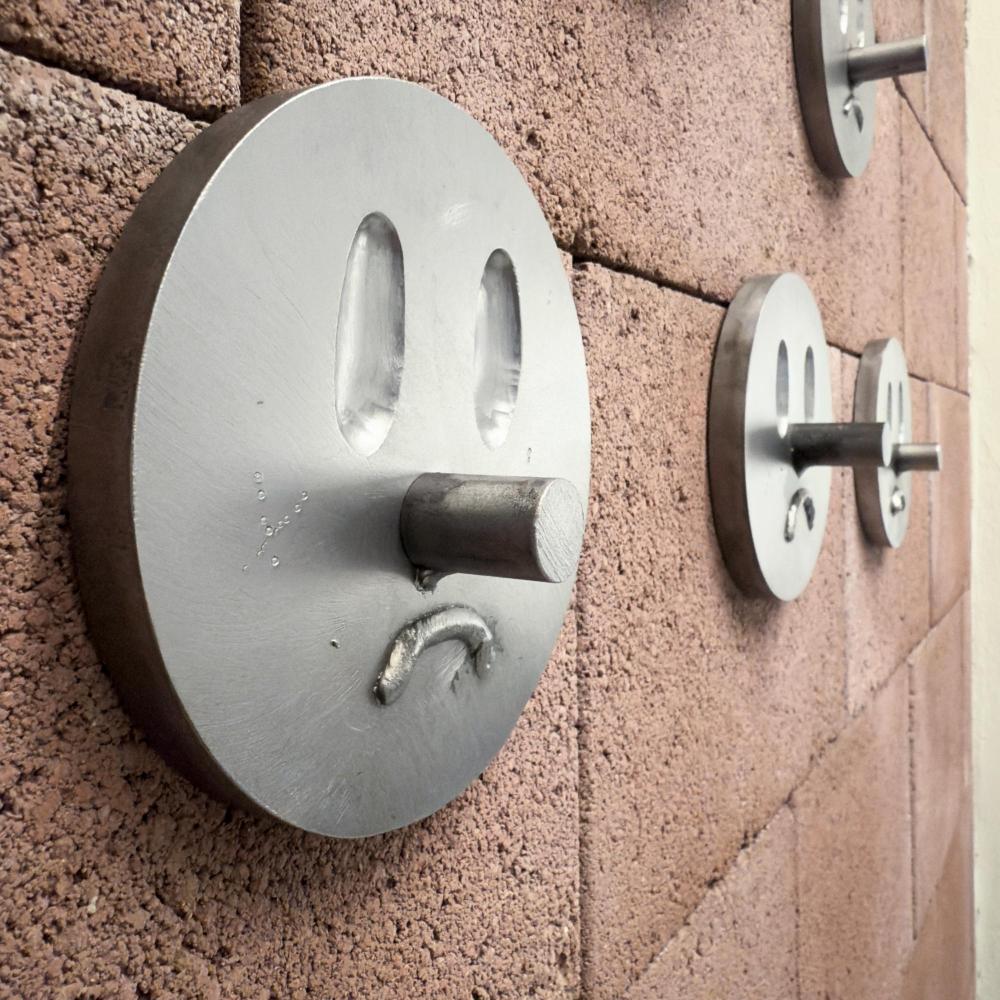NAME TELEGRAPH
The building that houses the Telegraph was used as a telephone and telegraph factory in 1909. The machines, invented and perfected by American artist Samuel Morse, revolutionized human communication. Even though telegraphs are no longer used and the last telegram in the country was sent in 2010, the Telegraph continues to fulfill its original purpose: to spread information, send signals and connect people.
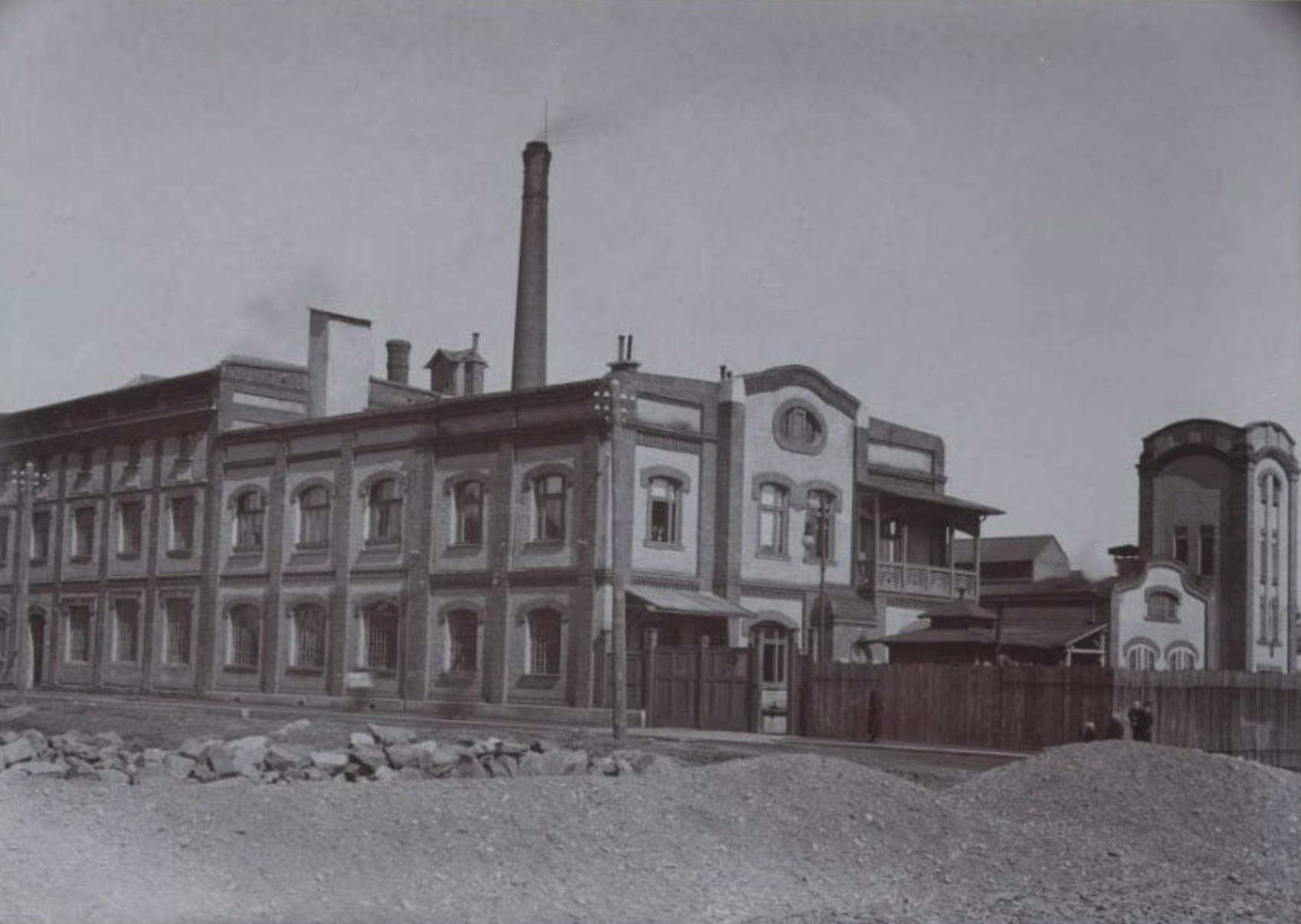
BANDASKA FROM THE HUB TO THE CAFÉ
If you've been to the Hub, you may have noticed the spiral staircase that leads up to the Telegraph Cafe. We call this structure a bandana (a metal container used to carry liquids) because of its cylindrical shape and manufacturing material. Interestingly, there used to be a food elevator at this location, used to transport food from the production cafeteria to workers on the shop floor. Now coworkers use it as a quick shortcut to the cafeteria.

NEON HEADS
When you walk past the Telegraph in the evening, you're bound to notice an unusual neon installation. Its creator is a representative of post street art, Czech artist Michal Škapa. The neon heads represent the eight main founders of the Telegraph.
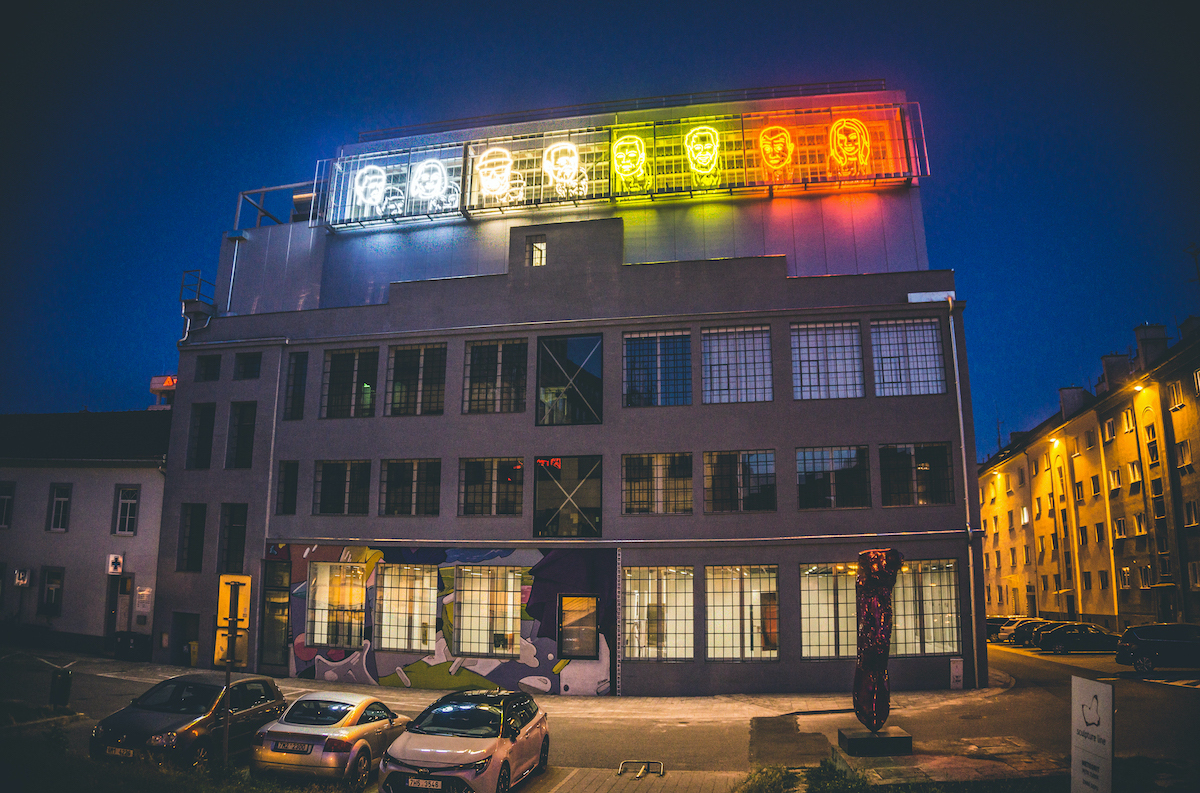
THE INNOCENT
Since August last year, a sculpture called The Glutton has stood on the corner of Jungmannova and Smetanova streets. The work by Slovak sculptor Andrej Margoč is meant to draw attention to the fight against the silent and inconspicuous killer sugar, which is hurting millions of people around the world. According to the artist, the size of the tongue is meant to represent the huge appetite for sweet. This is supported by the distinctive pink and irresistible colour of the cakes. With his work, the sculptor is trying to show the magnitude of this social problem.
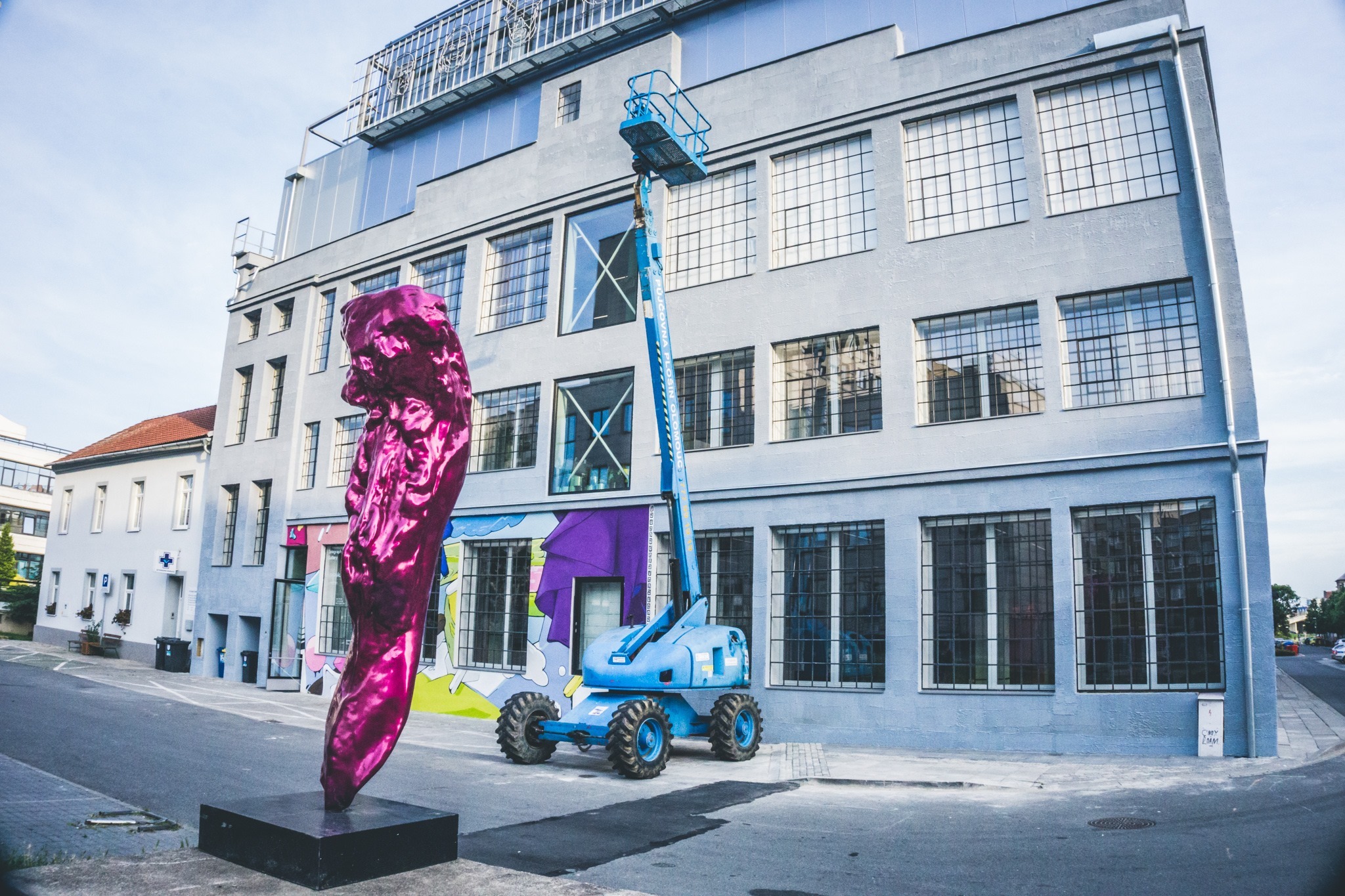
Other Signal TELEGRAPH GALLERY
Every year a different curator, every year a different concept. The unique Signal exhibition always shows a new face of Robert Runták's collection. Its changeability was already reflected in the first edition, during which the authors of the installation, Martin Drábek and David Vojtuš, did not focus on the works themselves, but on the phenomenon of collecting as such. Just as a collector changes his collection over time, the exhibition itself has also changed. Thus, works were removed from the exhibition or added to it. The second edition of Signal is scheduled for the summer of 2021.
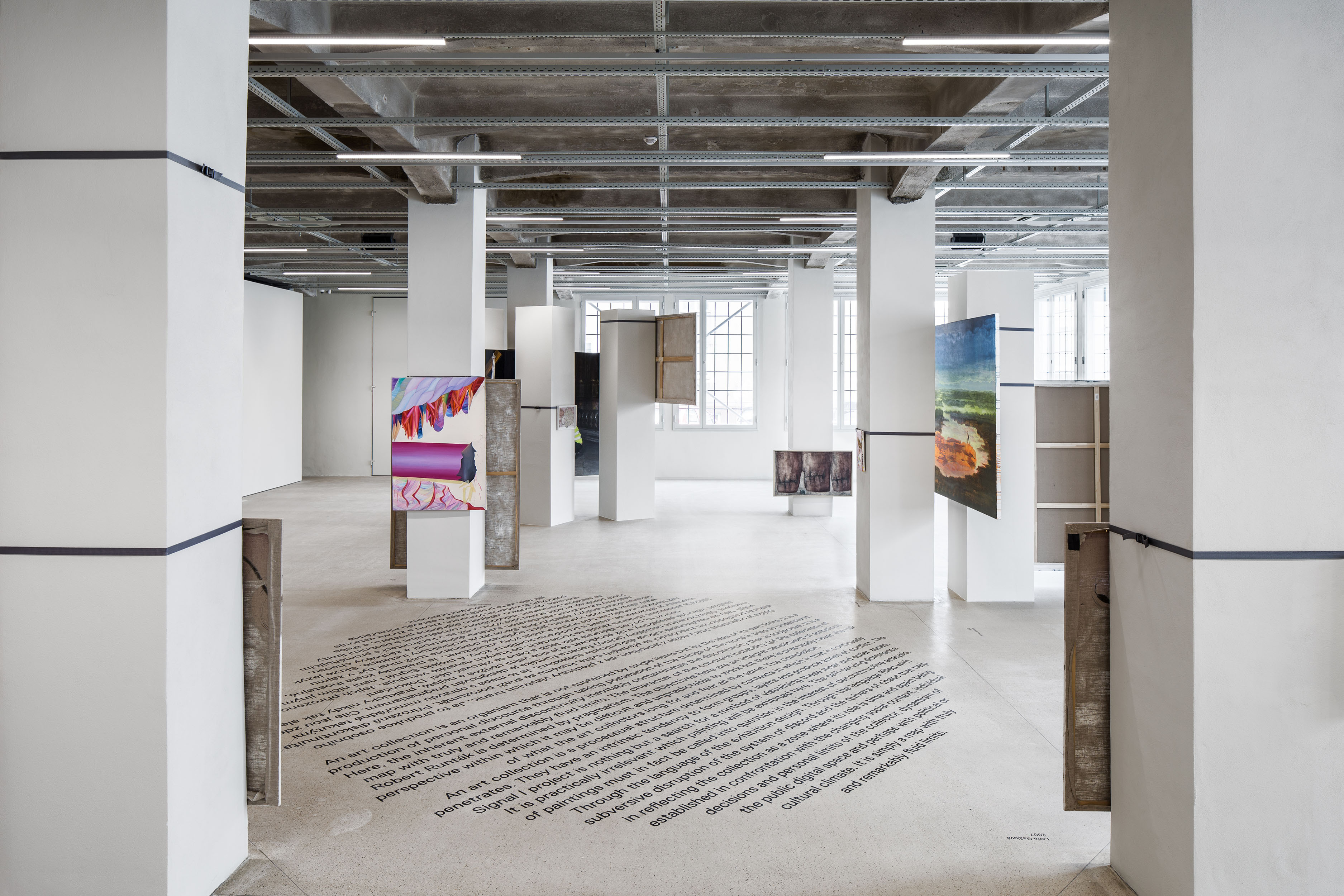
Text: Nikola Prasilova, Telegraph Hub






